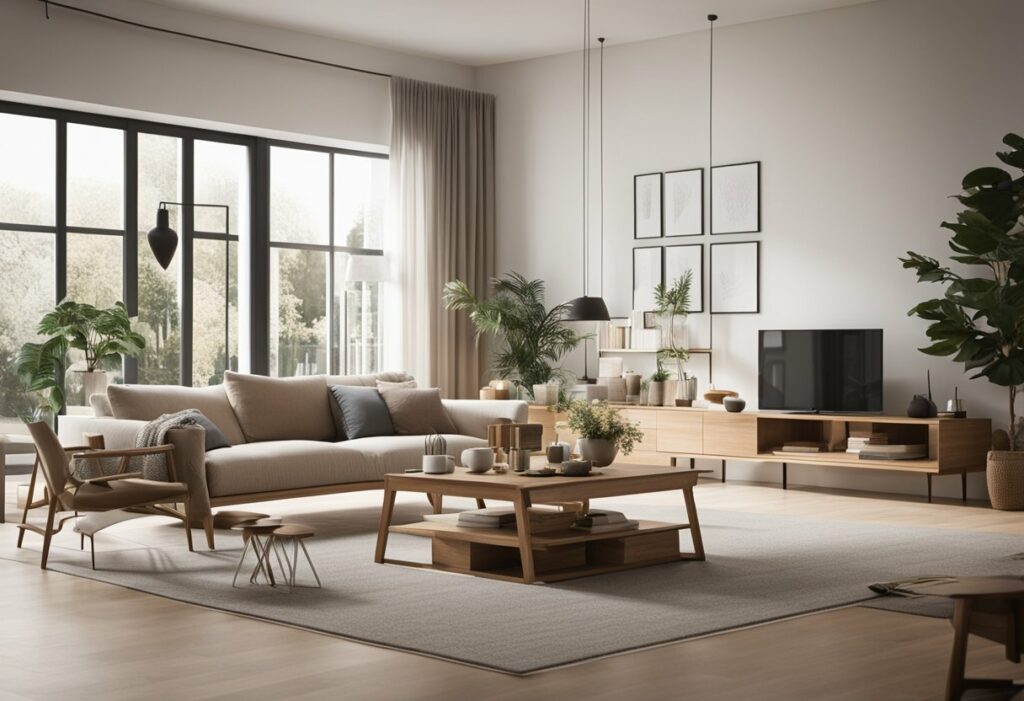What is Scandinavian Interior Design? Discover the Minimalist Beauty of Nordic Style
Scandinavian interior design is a highly popular design style known for its simplicity, functionality, and minimalism. It emerged in the 20th century and has since gained widespread appeal for its clean and uncluttered aesthetic. The design philosophy is rooted in the idea of creating comfortable and inviting spaces that are practical and visually appealing, often drawing inspiration from the natural landscapes of the Nordic countries.
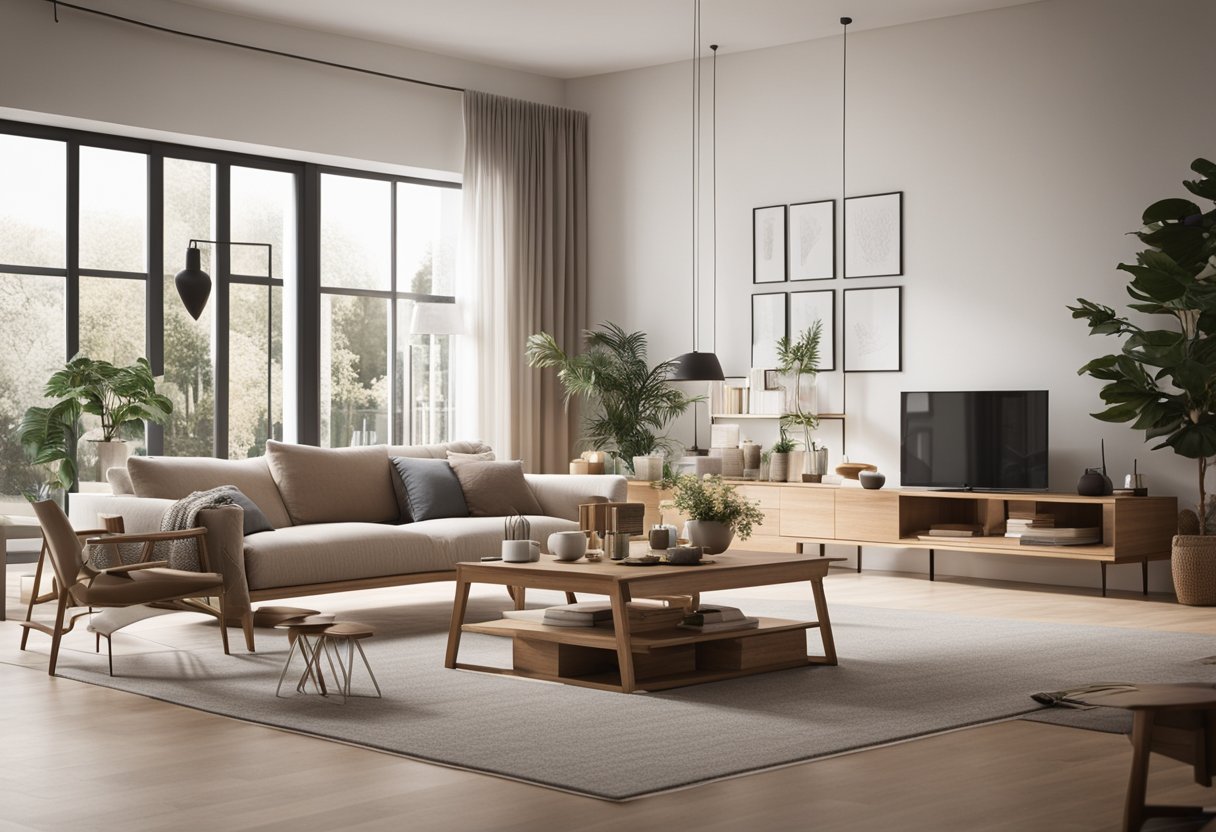
This design style is characterised by a neutral colour palette, natural materials, and an emphasis on light, which creates a sense of airiness and warmth in the space. The use of clean lines, uncluttered spaces, and a focus on functionality are key elements that define Scandinavian interior design. The design ethos often seeks to seamlessly merge functionality with beauty, resulting in spaces that are both visually appealing and highly practical.
Key Takeaways
- Scandinavian interior design is renowned for its simplicity, functionality, and minimalism.
- The style is characterised by a neutral colour palette, natural materials, and an emphasis on light.
- The design philosophy aims to create practical and visually appealing spaces that are inspired by the natural landscapes of the Nordic countries.
Key Characteristics of Scandinavian Interior Design
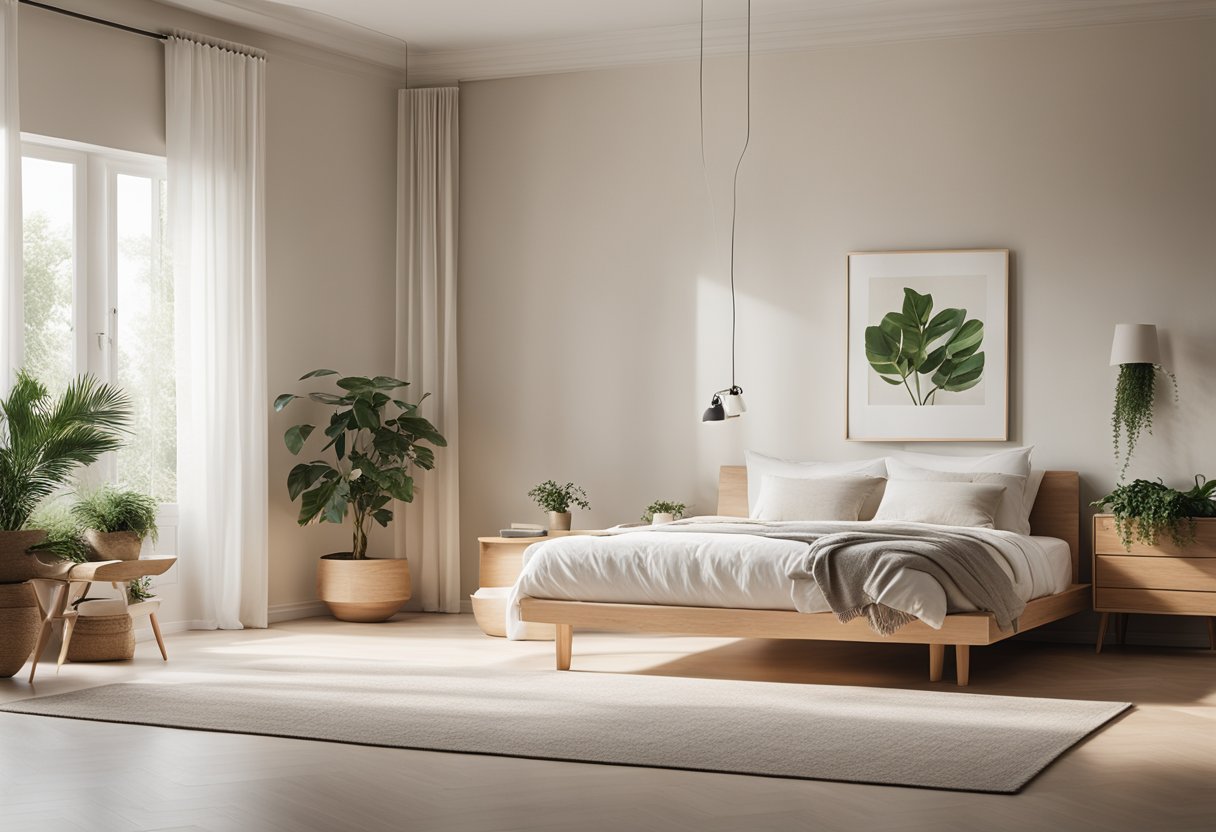
Scandinavian interior design is known for its simple yet functional style that emphasises natural light, neutral colours, and the use of natural materials. In this section, we will explore the key characteristics of Scandinavian interior design that make it such a popular style.
Emphasis on Natural Light and Neutral Colours
In Scandinavian interior design, natural light is a key element that is used to create bright and airy spaces. Large windows are often used to maximise the amount of natural light that enters a room, and light-coloured walls and floors help to reflect this light and make the space feel even brighter. The use of neutral colours such as white, beige, and grey also helps to create a sense of calm and tranquillity in a room.
Functional Furniture with Clean Lines
Scandinavian furniture is designed with both form and function in mind. Clean lines and simple shapes are used to create furniture that is both stylish and practical. Scandinavian furniture is often made from natural materials such as wood, which helps to create a warm and inviting atmosphere in a room. Quality craftsmanship is also an important aspect of Scandinavian furniture, with a focus on durability and longevity.
Incorporation of Natural Materials and Textures
The use of natural materials and textures is another key characteristic of Scandinavian interior design. Wood is a popular material, with light-coloured woods such as pine and birch being particularly common. Other natural materials such as wool, leather, and linen are also used to add texture and warmth to a room. Natural textures such as woven rugs and knitted throws are also used to create a cosy and inviting atmosphere.
In summary, Scandinavian interior design is characterised by its emphasis on natural light, neutral colours, functional furniture with clean lines, and the incorporation of natural materials and textures. By following these key principles, you can create a stylish and inviting space that is both practical and beautiful.
Cultural Influences and Design Philosophy
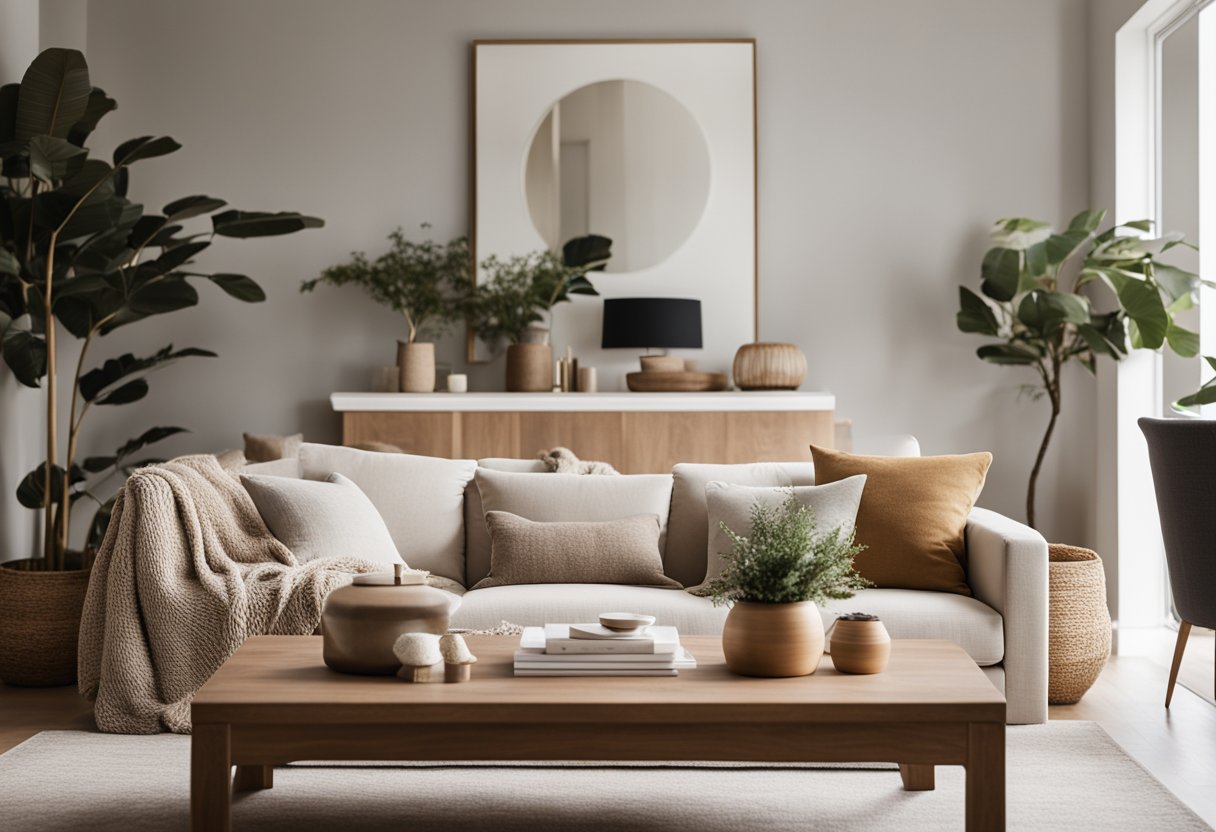
Scandinavian interior design is heavily influenced by the cultural heritage and design philosophy of the Nordic countries. The design philosophy is characterized by simplicity, minimalism, and functionality, which is reflected in the interior design of homes, offices, and public spaces.
Hygge: The Danish Concept of Cosiness
One of the most important cultural influences on Scandinavian interior design is the Danish concept of “hygge.” Hygge is a concept that emphasizes the importance of creating a warm and cosy atmosphere in your home. It is about creating a sense of comfort, relaxation, and contentment. Hygge is achieved through the use of warm lighting, textured fabrics, and natural materials such as wood and stone.
Sustainable and Timeless Design Approaches
Sustainability is also an important aspect of Scandinavian interior design. The Nordic countries are known for their focus on sustainable living and design. This is reflected in the use of natural materials, such as wood, stone, and wool. Scandinavian interior design also emphasizes the importance of timeless design, which means that the design should be able to stand the test of time. This is achieved through the use of simple, clean lines, and a focus on functionality over form.
Overall, Scandinavian interior design is a reflection of the cultural heritage and design philosophy of the Nordic countries. With its emphasis on simplicity, minimalism, and functionality, it has become one of the most popular interior design styles in the world. Whether you are looking to create a warm and cosy atmosphere in your home or want to incorporate sustainable and timeless design into your space, Scandinavian interior design has something to offer for everyone.
Frequently Asked Questions
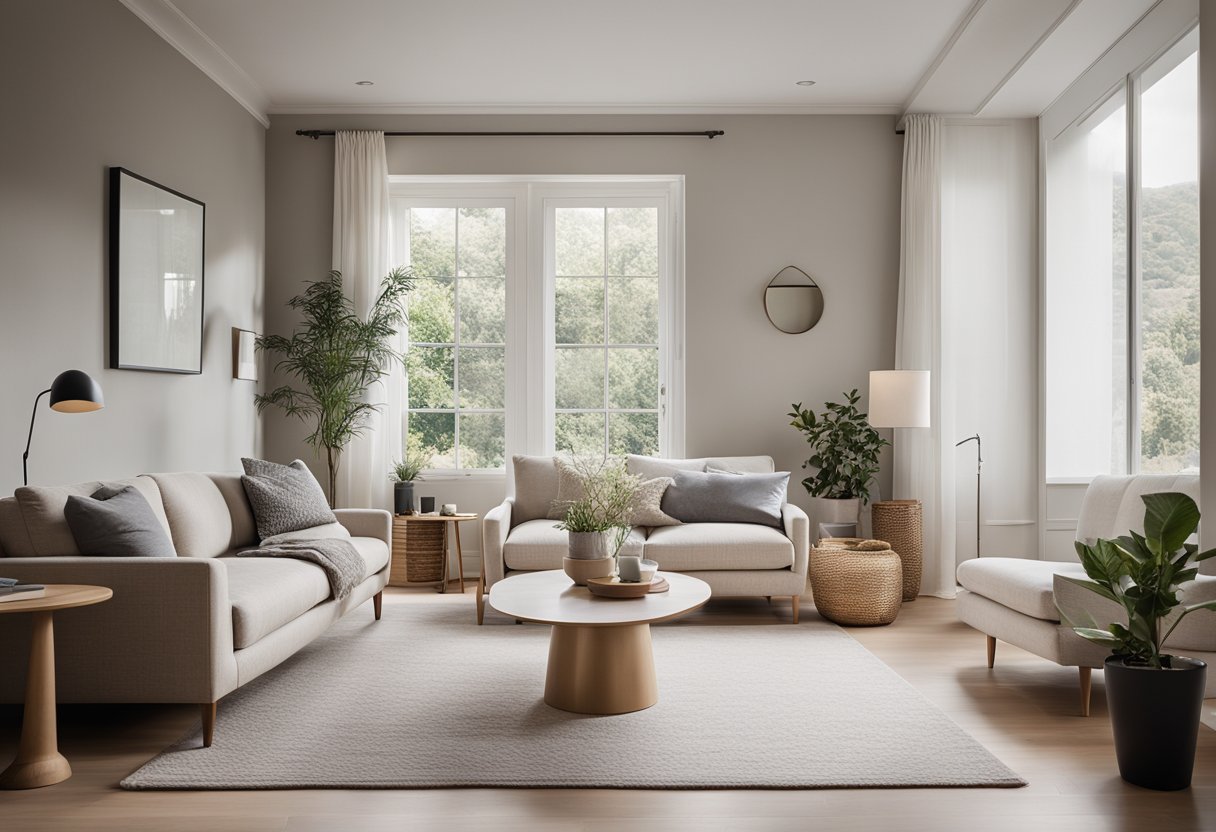
What are the defining features of a Scandinavian style living room?
A Scandinavian style living room is characterised by its simplicity, functionality, and minimalism. The use of light colours, natural materials, and clean lines create a warm and inviting atmosphere. The focus is on creating a comfortable and practical space that is also aesthetically pleasing. Common features include large windows that let in natural light, wooden floors, and a mix of textures.
How can I create a bedroom with a Scandinavian interior design theme?
To create a bedroom with a Scandinavian interior design theme, start with a neutral colour palette of whites, greys, and beige. Add texture with natural materials such as wood, wool, and linen. Keep the space uncluttered and functional, with storage solutions that are both practical and stylish. Use lighting to create a cosy atmosphere, with soft, warm light sources such as table lamps and candles.
Could you list the primary characteristics of Scandinavian interior design?
The primary characteristics of Scandinavian interior design include simplicity, functionality, and minimalism. The focus is on creating a warm and inviting space that is also practical and aesthetically pleasing. Natural materials such as wood, wool, and linen are used to add texture, while light colours such as whites, greys, and beige create a sense of calm and tranquillity. Clean lines, uncluttered spaces, and a mix of textures are also common features.
What types of furniture epitomise the Scandinavian design aesthetic?
Scandinavian design is characterised by its use of natural materials, clean lines, and functional design. Furniture that epitomises the Scandinavian design aesthetic includes pieces made from wood, such as oak and birch, as well as pieces made from metal and leather. Simple, uncluttered designs are preferred, with a focus on functionality and practicality.
How does modern Nordic interior design differ from traditional styles?
Modern Nordic interior design takes inspiration from traditional Scandinavian design, but incorporates more contemporary elements and materials. While traditional Scandinavian design focuses on natural materials and minimalism, modern Nordic design incorporates more colour and texture, as well as a wider range of materials such as glass and metal. The focus is still on creating a warm and inviting space, but with a more contemporary twist.
Which colour palettes are most commonly used in Scandinavian design schemes?
The most commonly used colour palettes in Scandinavian design schemes include whites, greys, and beige, as well as pastel colours such as light blues and pinks. These colours create a sense of calm and tranquillity, and work well with natural materials such as wood and wool. Darker colours such as navy and black can also be used to create contrast and depth.

